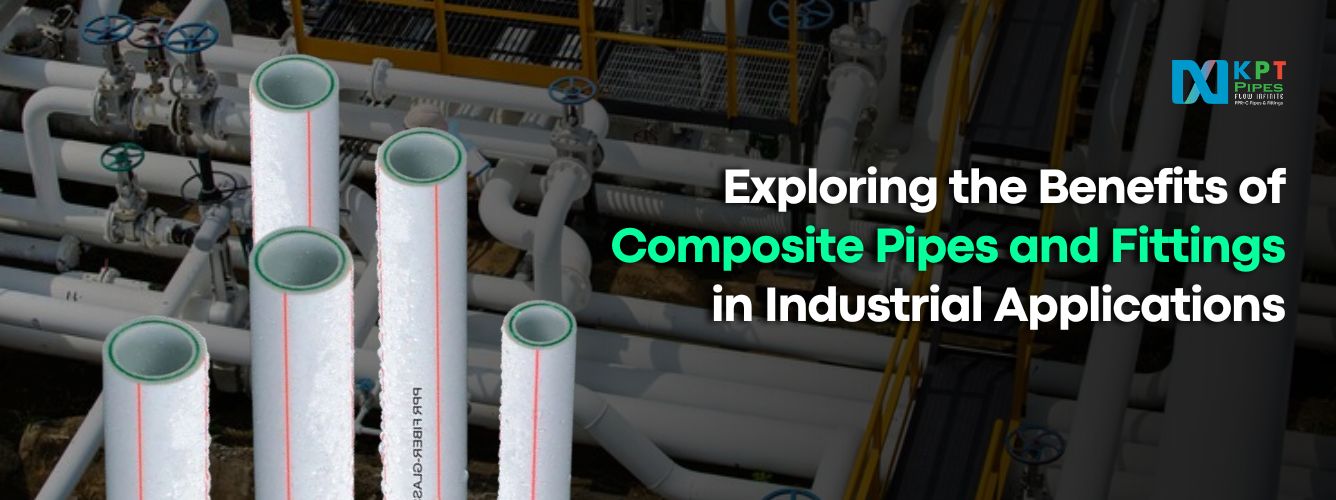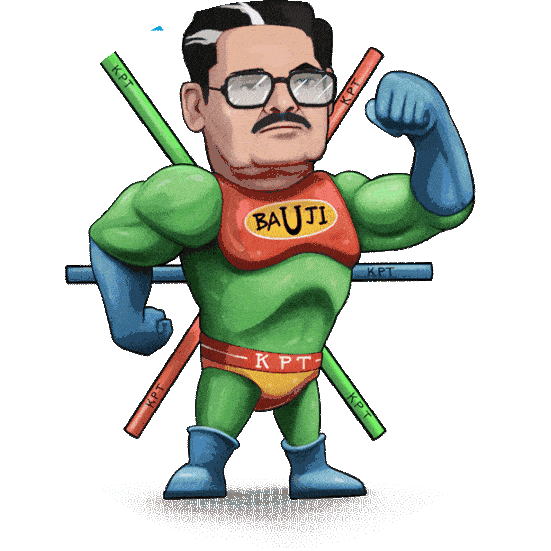
30 Apr Exploring the Benefits of Composite Pipes and Fittings in Industrial Application
In industrial applications, the need for reliable, durable, and cost-effective plumbing solutions is paramount. Industries worldwide are continuously on the lookout for materials that can withstand high pressures, temperatures, and corrosive environments. Traditional piping materials like metal and PVC have long been the go-to options for industrial plumbing. However, with the evolution of technology, composite pipes have emerged as an innovative solution that addresses the limitations of these materials.
One such innovative solution is PPR-AL Therm pipes, a type of composite pipe that combines the benefits of polypropylene (PPR) and aluminium (AL). PPR-AL Therm pipes and fittings have rapidly gained popularity in various industrial applications due to their unique properties, making them ideal for industries such as construction, automotive, chemical processing, and more.
This blog will explore the numerous benefits of composite pipes and fittings, focusing on PPR-AL Therm pipes, and how they have revolutionised industrial applications.
What are PPR-AL Therm Composite Pipes?
Composite pipes are a combination of multiple materials, designed to take advantage of the individual strengths of each material while minimising their weaknesses. In the case of PPR-AL Therm pipes, the combination of polypropylene (PPR) and aluminium (AL) creates a pipe that offers an optimal balance of flexibility, strength, resistance to heat and pressure, and durability.
The construction of PPR-AL Therm pipes consists of an inner and outer layer of PPR, which provides excellent chemical resistance and flexibility. Between these two layers is a layer of aluminium, which adds strength, reduces thermal expansion, and improves the pipe’s resistance to high temperatures.
This combination of materials results in a pipe that is both lightweight and incredibly durable, making it ideal for industrial applications where long-term performance is essential.
Benefits of PPR-AL Therm Composite Pipes and Fittings
1. Durability and Long Life
One of the key advantages of PPR-AL Therm pipes is their exceptional durability. The inner and outer layers of PPR provide excellent resistance to chemical corrosion, while the aluminium core offers strength and rigidity. This combination of materials results in a pipe that can withstand the harshest industrial environments, including exposure to chemicals, oils, and other corrosive substances.
Moreover, PPR-AL Therm pipes are designed to last for decades, with minimal wear and tear. They are resistant to cracking, scaling, and rusting, all of which are common issues with traditional metal pipes.
2. High Temperature and Pressure Resistance
Industrial applications often require pipes that can handle both high temperatures and high pressures. PPR-AL Therm pipes are specifically designed to meet these demands. The aluminium core helps to maintain the pipe’s structural integrity at elevated temperatures, while the PPR outer layers prevent thermal expansion and contraction, ensuring the pipe retains its shape under pressure.
PPR-AL Therm pipes can typically withstand temperatures up to 95°C, with short bursts of up to 110°C. This makes them ideal for a wide range of industrial applications, including hot water systems, chemical processing, and steam lines.
3. Improved Flow Efficiency
The smooth internal surface of PPR-AL Therm pipes helps reduce friction, which improves the flow efficiency of fluids and gases. This is particularly important in industrial settings where the flow of liquids, chemicals, or gases must be maintained at optimal levels to ensure efficiency and minimise downtime.
The low resistance to flow in PPR-AL Therm pipes also helps to reduce the energy required for pumping fluids through the system, resulting in lower operational costs and reduced energy consumption over time.
4. Lightweight and Easy to Handle
Compared to traditional metal pipes, PPR-AL Therm pipes are significantly lighter, which makes them easier to handle, transport, and install. Their lightweight nature reduces labour costs and makes installation quicker and more efficient.
Additionally, the flexibility of PPR-AL Therm pipes allows for easier routing through tight spaces, reducing the need for additional fittings and joints. This flexibility also makes the pipes more resistant to mechanical stresses, such as vibrations, which are common in industrial settings.
5. Excellent Resistance to Corrosion and Scaling
Corrosion is a significant issue for many industrial systems, particularly those that handle water, chemicals, or gases. Metal pipes are prone to corrosion over time, which can lead to leaks, reduced flow capacity, and even system failures. PPR-AL Therm pipes, however, are highly resistant to corrosion. The PPR layers provide excellent protection against chemical attacks, while the aluminium core adds strength and further reduces the risk of corrosion.
Moreover, PPR-AL Therm pipes do not suffer from scaling, which is a common issue in pipes used for hot water and steam systems. This makes them ideal for use in industries where scaling can lead to decreased performance and higher maintenance costs.
6. Cost-Effectiveness
While the initial cost of PPR-AL Therm pipes may be higher than traditional plastic or metal pipes, the long-term benefits make them a cost-effective solution in the long run. Their durability and resistance to corrosion reduce the need for frequent repairs or replacements, resulting in lower maintenance costs over time.
Furthermore, the improved flow efficiency and energy savings associated with PPR-AL Therm pipes can lead to significant cost reductions in terms of operational expenses.
7. Environmental Benefits
Composite pipes like PPR-AL Therm are also more environmentally friendly than traditional metal pipes. The manufacturing process for these pipes requires less energy and produces fewer emissions compared to metal pipes, making them a more sustainable choice.
Additionally, the longevity and durability of PPR-AL Therm pipes mean fewer replacements are needed, which helps reduce waste. The ability to reuse these pipes also contributes to a more sustainable approach to industrial plumbing systems.
8. Easy Installation and Maintenance
PPR-AL Therm pipes are easy to install and maintain, which makes them an attractive choice for industries that require minimal downtime. The lightweight nature of the pipes, combined with their flexibility, allows for quick and efficient installation.
Maintenance is also simplified due to the smooth internal surface of the pipes, which reduces the accumulation of debris and minimises the risk of blockages. In the event of any issues, repairs are quick and cost-effective, as the pipes can be easily cut and fitted with standard tools.
Applications of PPR-AL Therm Pipes in Industries
Chemical Processing Plants
Chemical processing plants require highly resistant piping for handling aggressive substances. PPR “AL Therm” pipes endure corrosive chemicals and elevated temperatures with ease. Their aluminium core provides added strength and stability. These pipes are ideal for transporting acids, alkalis, and solvents while minimising maintenance and downtime.
Food and Beverage Industry
In the food and beverage industry, hygiene and safety are critical. PPR “AL Therm” pipes feature a food-grade inner surface that doesn’t react with edible substances. They are easy to clean, resistant to microbial growth, and maintain the integrity of transported liquids. These pipes meet strict sanitary standards, ensuring safe and reliable transport.
Pharmaceutical Manufacturing
Pharmaceutical manufacturing demands sterile and chemically stable environments. PPR “AL Therm” pipes are non-reactive and free from toxic elements, maintaining the purity of medicinal compounds. They withstand temperature fluctuations and chemical exposure, making them suitable for sensitive pharmaceutical processes. These pipes are ideal for cleanrooms and pharma production areas.
HVAC and Chilled Water Systems
HVAC systems need materials that can handle pressure changes and temperature extremes. PPR “AL Therm” pipes offer low thermal expansion and dimensional stability, even in hot and chilled water systems. Their multilayer design ensures excellent insulation, improving energy efficiency. These pipes help maintain system performance while reducing heat loss and energy consumption.
Compressed Air Systems
Industrial factories and workshops require reliable, high-pressure air systems. PPR “AL Therm” pipes resist pressure surges and provide leak-proof, durable joints. Their smooth inner surface allows for efficient airflow, minimising pressure drop. These pipes are perfect for use in compressed air distribution systems, ensuring long-term reliability.
Water Treatment Plants
Water treatment plants face continuous flow and harsh chemical exposure. PPR “AL Therm” pipes resist these demanding conditions while ensuring structural integrity. Their multi-layer design guarantees longevity, even under mechanical and thermal stress. These pipes are essential for transporting treated water, effluents, and chemical dosing lines in treatment plants.
Installation and Maintenance Advantages
PPR “AL Therm” pipes utilise advanced heat fusion technology, creating joints that are seamless and robust. This method results in connections stronger than the pipe itself, ensuring leak-free systems and minimising the risk of failure, which is vital for reliable long-term performance.
Easy Welding and Connection
The heat fusion process used in PPR “AL Therm” pipes enables straightforward welding and connections without the need for additional sealants or adhesives. This technology ensures smooth, secure joints that provide maximum strength and durability, enhancing the overall integrity of the system.
Low Maintenance Costs
Thanks to their inherent resistance to corrosion, abrasion, and chemical damage, PPR “AL Therm” pipes require very little maintenance even under the most demanding industrial conditions. This feature significantly reduces long-term operational costs, making it a cost-effective solution for businesses.
Flexibility in Design
KPT’s composite PPR “AL Therm” pipes are designed to work seamlessly with various fittings, valves, and connection methods. This compatibility allows for versatile pipeline layouts, making it easier to design and install customised systems that meet specific operational requirements.
Environmental Benefits
Industries today are striving to reduce their carbon footprint. Choosing PPR “AL Therm” from KPT Pipes is a sustainable decision:
- 100% recyclable
- No toxic emissions during production or operation
- Reduces energy usage through efficient thermal insulation
By switching to composite piping, industries not only save costs but also contribute to environmental conservation.
Safety Considerations in Industrial Environments
Safety is always a top concern in industrial environments, especially in settings where high temperatures and hazardous materials are involved. PPR “AL Therm” pipes provide a safe and secure solution as they are non-flammable and non-toxic, posing no risk of harmful gas emissions, even under extreme conditions.
This makes PPR “AL Therm” an ideal choice for applications in hazardous zones, ensuring that both workers and sensitive materials are protected. With their reliable and safe design, these pipes meet the stringent safety standards required in demanding industrial environments.
Future of Composite Piping Systems
As industries continue to automate and modernise, the demand for reliable, high-performance piping systems that require minimal maintenance will only increase. PPR “AL Therm” from KPT is leading the charge in this transformation, offering a durable and cost-effective solution for modern industrial applications.
With its ability to adapt to various operational requirements and environmental challenges, PPR “AL Therm” represents a future-ready solution, helping industries stay ahead in an ever-evolving technological landscape. Its versatility and performance make it a critical asset in the ongoing advancement of industrial systems.
Conclusion
When it comes to industrial applications, piping systems are not just utilities—they’re integral to productivity, safety, and efficiency. KPT Pipes, with its innovative PPR “AL Therm” composite pipes, offers a superior alternative to traditional piping materials.
From chemical plants to food factories, from HVAC systems to compressed air networks, KPT’s PPR “AL Therm” pipes and fittings deliver unmatched reliability and performance.
So, if you’re looking to upgrade your industrial piping infrastructure, choose the name synonymous with trust, technology, and top-notch quality—KPT Pipes, your premier PPR Pipes Manufacturing Company in India.
FAQs about PPR-AL Therm Pipes and Fittings
Q1. What are the advantages of using PPR-AL Therm pipes over traditional metal pipes? Ans: PPR-AL Therm pipes offer superior corrosion resistance, are lightweight, and have a smooth internal surface, which improves flow efficiency. They are also more flexible, durable, and resistant to high temperatures and pressures compared to traditional metal pipes.
Q2. How long do PPR-AL Therm pipes last?
Ans: PPR-AL Therm pipes are designed to last for decades with minimal wear and tear. Their durability makes them an excellent long-term investment, especially in industrial applications where reliability is critical.
Q3. Are PPR-AL Therm pipes suitable for high-pressure environments?
Ans: Yes, PPR-AL Therm pipes are designed to withstand high-pressure environments, making them ideal for industrial applications such as chemical processing, water treatment, and HVAC systems.
Q4. Can PPR-AL Therm pipes be used for hot water systems?
Ans: Yes, PPR-AL Therm pipes can handle temperatures up to 95°C, making them suitable for hot water systems, steam lines, and other applications involving high temperatures.
Q5. Are PPR-AL Therm pipes environmentally friendly?
Ans: Yes, PPR-AL Therm pipes are more environmentally friendly than traditional metal pipes due to their lower energy consumption during manufacturing and their longer lifespan, which reduces waste and the need for frequent replacements



